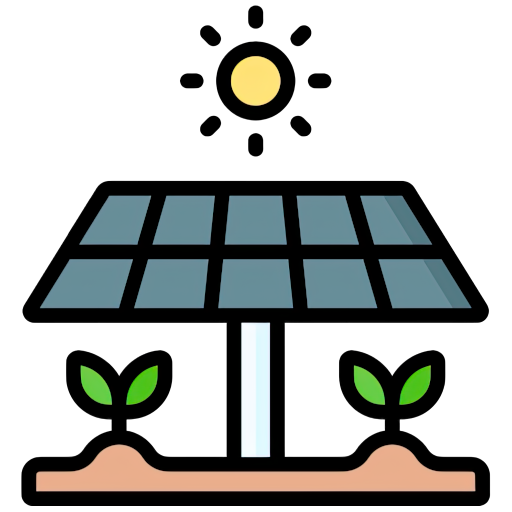How Solar Panels Work
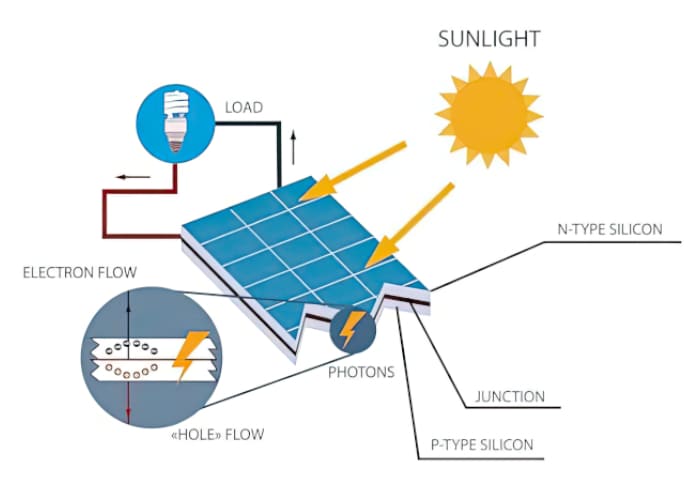
How Solar Panels Convert Sunlight into Electricity?
Solar cells are absorbing the sun’s energy as long as it is shining. Solar panels are made to transform solar electromagnetic radiation into direct-current energy that may be used.
The installation of solar panel systems also comprises electrical apparatus, inverters, and control circuitry that generate alternating currents.
You can store electricity for later use to run your systems and devices as usual with net metering or a solar battery.
What are Solar Panels?
A solar panel is just a grid of silicon, glass, and wires that transforms solar energy into electrical energy.
Solar panels’ most fundamental part is a photovoltaic (PV) cell. A collection of PV cells that are linked together form a panel. A solar array is made up of several panels, also known as modules.
A PV cell is typically 6 inches long by 6 inches wide and looks like a tiny reflective window. The number of photovoltaic cells needed for an array depends on the size of the module. A 12-volt module has 36 cells interconnected in a grid, whereas a 24-volt module has 72 cells.
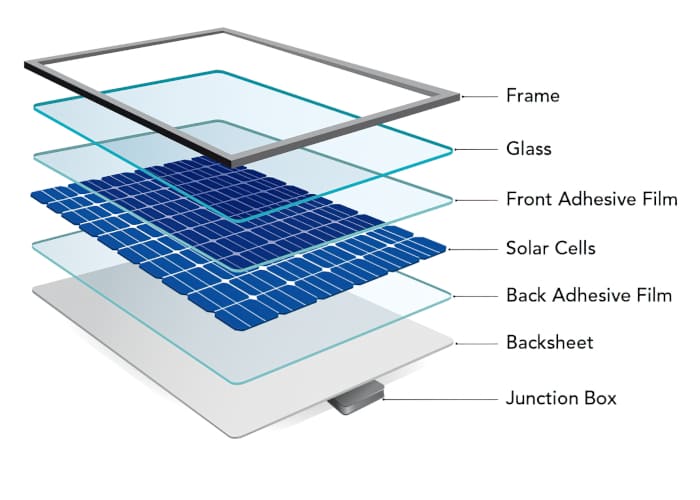
Each cell contains layers of semiconductive materials with opposing charges. Conventional solar cells are made of silicon, the second most abundant element on Earth after oxygen.
Crystalline silicon is utilized as a semiconducting component in solar electric technology. The most common types of silicon used in residential solar panels are monocrystalline or polycrystalline. Monocrystalline panels, which feature rounded edges and a uniformly black appearance, are made from single-crystal silicon. Polycrystalline panels, which have square edges and a blue and speckled appearance, are created from multi-crystalline silicon.
The efficiency of a solar panel is significantly influenced by how much pure silicon is present in each cell. With the same amount of area, monocrystalline may generate more solar power than polycrystalline because it is purer. There are several types of solar modules, such as those that use thin-film or amorphous silicon solar cells, although these are often not considered suitable for installation in homes.
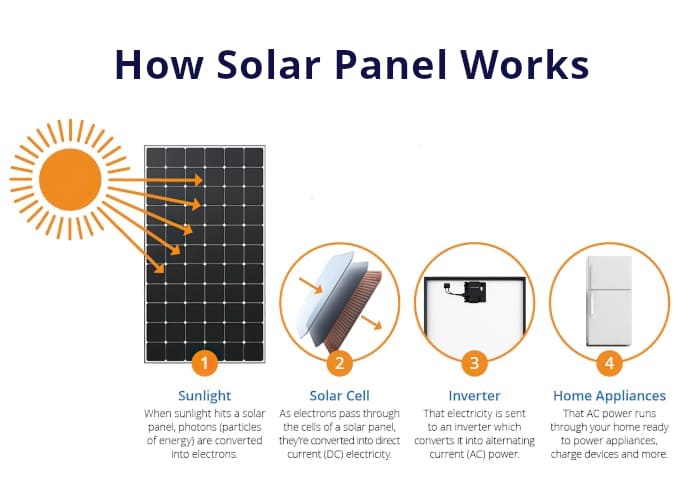
How do Solar Panels work?
The sun constantly releases energy in the form of minute particles of electromagnetic radiation called photons, just like a natural nuclear reactor might. The photovoltaic effect, a physical and chemical phenomenon that transforms solar energy into usable electricity, is how solar panels produce power.
The solar cells of a module collect light energy when sunlight strikes it (photons). Simply put, solar panels generate direct current from solar energy, which is then changed into the alternating current that runs your home.
Solar cells absorb photons
Consider photons to be little sunlight rays. When an electron is knocked loose by a photon, the solar cell develops a “hole.” The positively charged hole’s position and the negatively charged electron are now free to move.
At the top of the cell, tiny metal “fingers” assist capture stray electrons. A pair of positive and negative charges are set off when a photon strikes a solar cell, producing voltage and electrical current. Atoms swiftly split into silicon cells as electrons join a current flow.
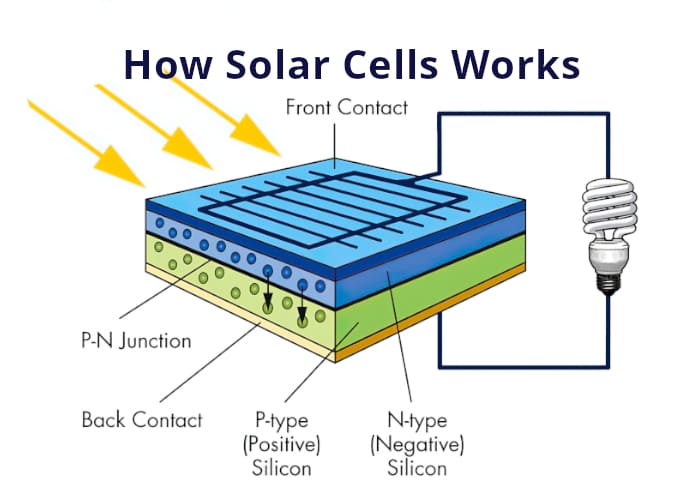
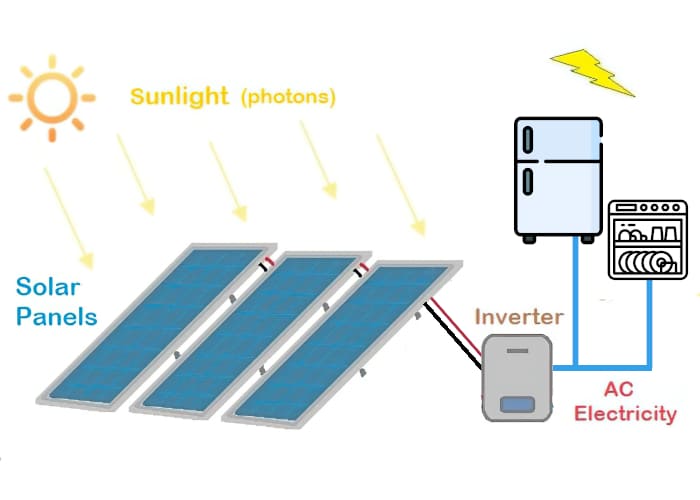
Solar panels generate current
Photons are converted into direct current by solar cells (DC). Crystalline silicon is the main component of each solar cell, sandwiched between positive and negative conducting layers. While the positive layer has more space for holes, the negative layer contains more electrons. The two layers’ junction, where electrons are free to wander, has a positive charge on one side and a negative charge on the other.
To power, a house, modules of cells are needed because each cell only produces around half a volt. For comparison, 12 photovoltaic cells are required to charge a cell phone, and multiple modules (dozens or even hundreds of individual cells) are required to power a full house.
With a wider spectrum of wavelengths that can be converted, solar panels can generate currents more effectively. The maximum silicon solar cell efficiency could increase thanks to new developments in solar energy technology.
An inverter changes DC to AC
Solar cells can’t power a house on their own; an inverter is needed to turn that current into useful electricity. The panel produces direct current as its source of electricity (DC). A tiny amount of power is wasted while alternating current (AC) energy is converted from direct current (DC) energy by an inverter.
A single inverter for the entire system or a microinverter connected to each panel is generally used in solar power installations. In either case, the inverter’s function is to transform DC electricity into AC power.
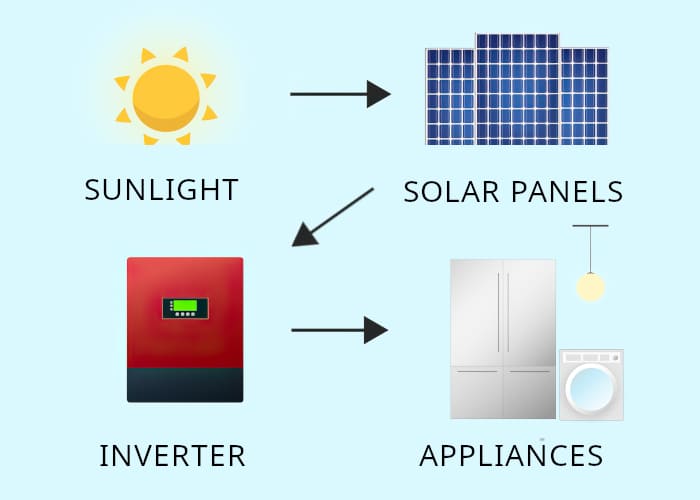
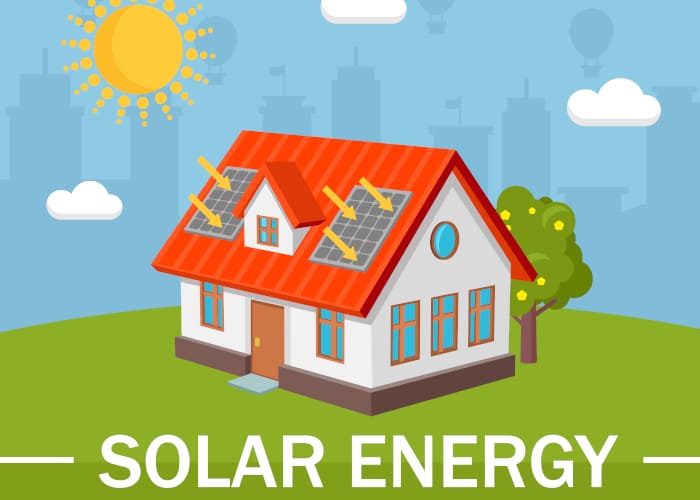
Converted electricity is available for power
AC electricity travels from the inverter to an exterior circuit and then inside your house. Light switches, appliances, televisions, and the rest of your home’s electrical equipment can all be powered by solar energy.
Solar panels might occasionally generate more energy than you and your family require. When this occurs, electricity can either be sold back to the grid or stored in a battery bank.
Converted Extra Energy from Solar can be stored or Sold
With the help of a solar battery, you can store extra energy, or you can use a net metering program to sell it back to your neighborhood utility company. Consider purchasing a solar storage battery if you would prefer for your system to operate off the grid.
This provides you with access to electricity around-the-clock, even on overcast days when solar panels produce electricity less effectively. Storage batteries are most likely a superior option if initial installation costs are not a concern.
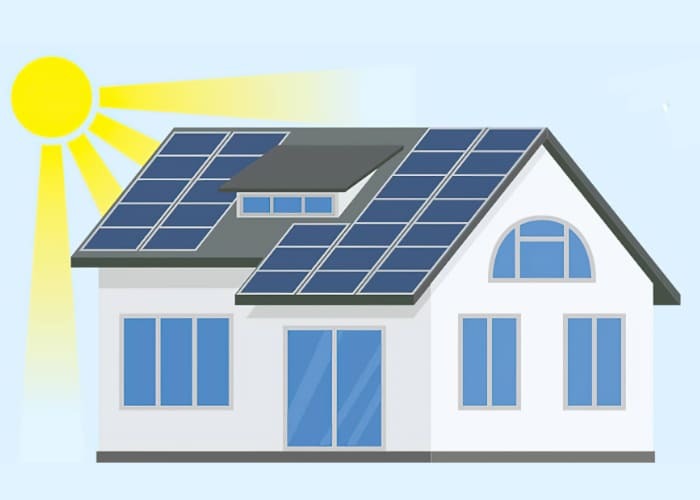
A utility provider will compensate you for producing electricity if you use net metering. You may be eligible for bill credits for the extra power your solar panels feed into the grid, depending on the program offered by your local utility company.
While credits for power production can reduce costs, there is no payment for sending electricity to the grid.
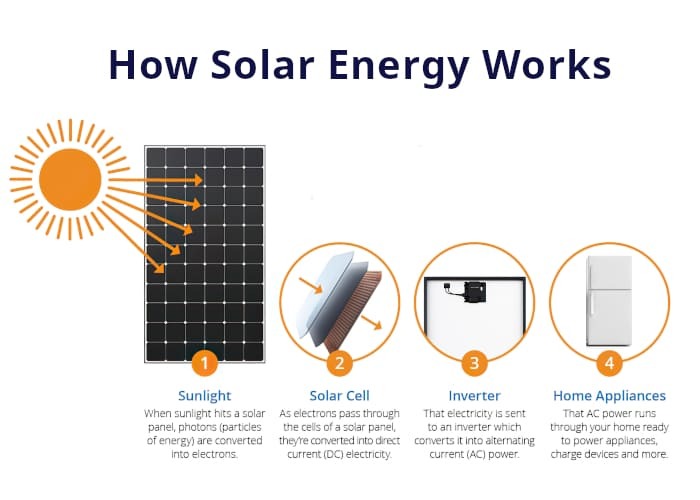
How are Solar Panels made?
Silicon, which is derived from sand, is the primary component of solar panels. Sand must be processed and cleansed once it is removed from quarries. The sand is heated to more than 3,600 degrees Fahrenheit to isolate the pure silicon crystals.
Doping is the deliberate addition of impurities, typically boron and phosphorus, which combine to form a positive charge and a negative charge, respectively, because silicon is not a strong natural conductor. The crystalline silicon is then melted into wafer-sized ingots and thinly cut into ingots that are panel-sized sheets.
To reduce energy waste, silicon must be coated with an anti-reflective material because it is naturally glossy. A titanium dioxide-based anti-reflective coating is put on and baked into place. The energy from the panels is then transferred to your plugs and the appliances you need to power by the use of high-tech computers spraying a layer of semi-liquid metal onto the panels.
More than just silicon solar cells are produced using this manufacturing process. Additionally, integrated circuits and computer microchips are made using silicon wafers. While photovoltaic cell panels are a wise choice for homeowners who care about the environment, their production is not fully green because it involves the use of fossil fuels.
As the light-harvesting active layer, some solar cells use a perovskite substance instead of silicon, like a hybrid organic-inorganic lead. Perovskite cells are more effective, more affordable to make, and simpler to construct, according to a study by the Solar Energy Technologies Office.
Thin-film technologies with cadmium telluride and amorphous silicon are used in the solar cells of space spacecraft. These cells are arranged in a grid to create a panel with the capacity to absorb sunlight and support the production of renewable energy.
How long do solar panels last?
Solar panels are surprisingly durable — they can last up to 25 years or more with little to no maintenance. Electrons are the only moving part in a solar cell, and they all go back where they came from. To maintain optimum output, though, you’ll want to regularly clean your solar panels and have any damaged panels replaced.
Most solar panel manufacturers predict a degradation rate of about 0.8% every year. After 20 years, solar energy production should be around 84% of the efficiency standard. Typically, residential panels come with a performance warranty that lasts between 10 and 25 years, which may not cover the full life span of your system.

Some crystalline panels have been known to function at relatively high efficiency for 40 years. Panels can even withstand wind speeds of up to 140 miles per hour, according to Coverage for solar panels is also included in most home owners insurance policies to protect against damages.
Solar PV inverters and batteries don’t last as long. You will likely have to replace both within your system’s lifespan. Solar PV inverters can last anywhere from 10 to 15 years.You can expect a good solar battery to last between eight and 15 years.
Like panels, battery and inverter performance can also decline over time. As you compare solar equipment, look for brands that include a warranty and performance guarantee.










